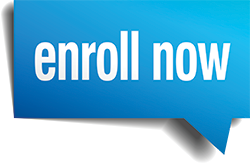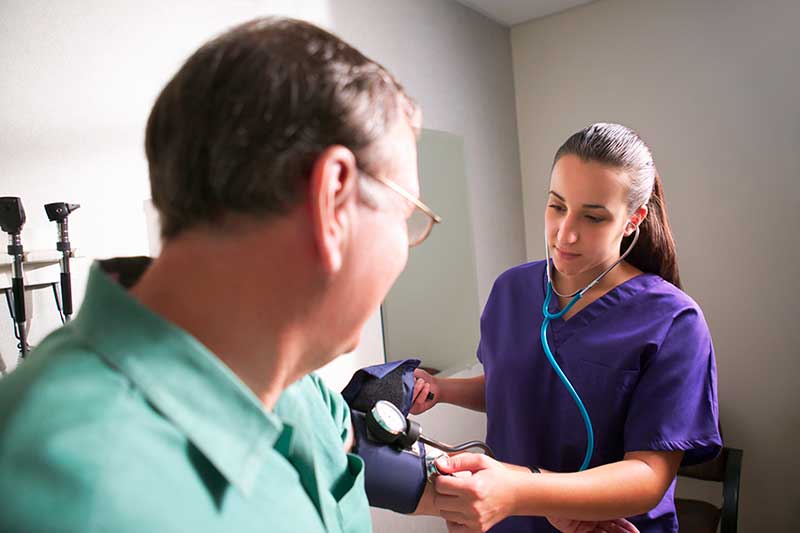Demand for medical assistants is starting to outpace supply. If you’re interested in a healthcare career, now’s the time to consider joining the field. But what type of training helps you become a medical assistant? The good news is, you can complete a vocational school program and be ready for your first day on the job.
What Does a Medical Assistant Do?
Medical assistants are support professionals. They perform various clinical and administrative tasks in medical settings, from hospitals to private practices. Their many responsibilities include:
Triaging Phone Calls
Medical assistants triage health-related phone calls and report symptoms to the physician. They have the clinical training required to recognize urgent needs and prioritize responses.
Scheduling
Medical assistants help the front office with scheduling by managing staffing and equipment resources. When everything is prepared before patients arrive, complex visits go smoothly.
Rooming Patients
Medical assistants walk patients to exam rooms where they wrap up minor clinical and recordkeeping tasks before the provider arrives, such as updating medical records, helping patients change and performing verbal screens for pain, mental health, and safety needs.
Obtaining Vital Signs
Vital signs help doctors make important treatment decisions. As a medical assistant, you’ll take temperature, heart rate, blood pressure and respiratory rate readings at each.
Stocking Exam Rooms
Medical assistants are responsible for stocking exam rooms with the necessary supplies from tongue depressors to bandages. They also disinfect hard surfaces and equipment between patient visits to prevent the spread of contagious illnesses.
Obtaining Biological Specimens
Medical assistants help with the collection of blood, urine, and fecal samples for testing. Phlebotomy, drawing blood from a vein, is a particularly valuable skill taught in medical assisting programs.
Performing Diagnostics
Diagnostic tests, such as electrocardiograms and pacemaker checks, are part of many routine visits. Once requiring trips to the hospital, they’re now done in doctor’s offices by highly trained medical assistants.
Assisting with Minor Surgical Procedures
Doctors are performing more minor surgeries in their offices. Medical assistants help by preparing equipment, passing the surgeon instruments, monitoring the patient and recordkeeping. After procedures, they educate patients on precautions and home care. At follow-up visits, medical assistants handle dressing changes and suture removal.
Handling Referrals
Many patients are referred to specialists, but the process requires insurance preapproval and the exchange of documentation. Medical assistants have the technical, administrative, and clinical expertise necessary for the task.
Educating Patients
Medical assistants can’t give medical advice, but as the physician’s liaison, they can educate patients about their treatment plans and offer information about timely health topics, from nutrition to exercise.
What Education Helps You Become a Medical Assistant?
Healthcare is becoming increasingly complicated, and employers are responsible for their team’s actions. The risk of hiring untrained applicants is simply too high. Therefore, many employers look for medical assistants with formal educations.
And insurers like Medicare now require that medical assistants be certified to perform complex tasks. It makes more sense for doctors to hire candidates with proven skills. But while some medical assistants pursue college degrees, you can qualify for the same jobs and certification with a vocational school diploma in a fraction of the time. It’s the best value in higher education.
What Do Students Learn in a Medical Assisting Program?
Vocational school medical assistant programs prepare students for certification and entry-level positions. You’ll learn about:
Medical Terminology
Medical terms are baffling until you know a secret, most are a combination of prefixes, suffixes and root words that are easy to decipher once you know what they mean. The medical terminology course will have you reading charts in no time, not by making you memorize long lists of terms, but by showing you how to break them down into digestible easy-to-understand parts.
Anatomy and Physiology
Anatomy and physiology is the study of how the human body and how it works. Students learn about the twelve major body systems, associated disorders and treatments options, so they can better relate to patients and address their needs.
Microbiology
Microbiology is the study of microorganisms, such as bacteria, viruses and parasites. Medical assistants play an important role in infection control, so they need to understand how pathogens grow, function, and spread. You’ll learn how microbes cause disease and what you can do to stop them.
Pharmacology
Pharmacology is the study of medicines and how doctors use them to prevent and treat illness. Part of a medical assistant’s role is to help patients take their prescriptions safely. Topics in this course include drug classifications, indications, and safety precautions.
Clinical and Laboratory Practices
Medical assistants perform a broad range of clinical tasks from taking vital signs and drawing blood to administering EKGs. As a student, you’ll learn these procedures through a combination of classroom and hands-on activities, working with the same type of equipment you’ll find in the field.
Electronic Health Records
Medical records are stored on computers in two formats, electronic medical records (EMR) and electronic health records (EHR). EMRs contain one provider’s records, including demographic, health history, test results, visit notes, treatment plans and billing information. EHRs contain similar data but from multiple providers. You’ll learn how to retrieve, update, store and share data efficiently and securely.
Office Procedures
Medical assistants are trained in office procedures from billing and coding to filling out insurance forms and writing correspondence. In this course, you’ll get an overview of office practices from scheduling to customer service and how they blend with your clinical role.
Healthcare Law and Ethics
Healthcare is carefully regulated for public safety, so medical assistants need to be familiar with workplace rules. From observing privacy laws to managing ethical dilemmas, students will learn how to safeguard patients, themselves, and their employers.
What Are the Benefits of a Formal Education?
Vocational school training is a sound investment with benefits that last a lifetime. You enjoy:
A Comprehensive Education
Vocational schools prepare you for a career that requires mostly practical skills. With fewer theoretical courses and more hands-on training, graduates are work-ready on day one. The instruction is just as rigorous but without elective courses that take months to fulfill and don’t contribute to marketable skills.
Small Class Sizes
If you’re considering a career change but haven’t been in a classroom in a while, you’ll appreciate the small class sizes vocational schools offer. You get individual attention from your instructors and can better know your peers. Without competition for resources, the pace is relaxed. And if you struggle with the coursework, you won’t be left behind.
Hands-on Training
Vocational schools blend the best in classroom education with hands-on training. Regardless of your learning style, you’ll succeed. You’ll train with the same equipment you find in the workplace so nothing will feel unfamiliar when you land your first job.
A Flexible Schedule
Some people wait so long for the right time to go back to school that they never do. But most vocational school offer full-time, part-time, and online learning options. Full-time students start their new careers faster but taking evening classes is a good way to get ahead if you need to work while going to school. Having options equals greater opportunity.
Experience Instructors
Vocational school students gain deeper insights into their chosen professions by working with industry experienced instructors. Having worked in the field, they offer real-world guidance and strategies for transitioning from the classroom to the workplace.
Networking Opportunities
Breaking into a new industry is a challenge. Despite your training, no one in the field can vouch for your compassion or work ethic. But in a vocational school, you’ll build a network of friends from instructors to peers who can give you a personal reference and put in a good word for you with employers they know.
Confidence
There’s always a sense of doubt when entering a new field. Will you be good at your job? Did you do the right thing? But as a vocational school graduate, your diploma means you’ve been fully trained and evaluated. If you’re holding a diploma, you’re qualified.
Certification Opportunities
Certified medical assistants have a competitive advantage in the job market. Certification demonstrates proven skills and signals that you’re serious about your career. A vocational school diploma qualifies you for one of several nationally recognized certification exams.
Career Service
Not all jobs are posted to public job boards. Instead, employers tap pools of trained applicants. Many work with local vocational schools to meet their staffing needs without paying for advertisements that attract non-qualified candidates. No one works harder than vocational schools to place students in rewarding jobs.
Final Thoughts
Americans change careers more often than they used to, but whether it’s because times have changed or priorities have, higher education remains important. If you’re interested in the healthcare field but can’t afford to spend multiple years in college retraining for a new job, you can make a difference as a medical assistant.
Medical Assistant Diploma
The Medical Assistant program is designed to teach you the administrative and clinical skills necessary to work in both back and front office settings of a doctor’s office or similar setting.
After completing the diploma program at this El Cajon | San Diego Medical Assistant School, you have the option to continue in the Medical Assistant, Associate of Applied Science program. The associate degree can be completed in an additional 6 months and contains general education courses, along with advanced medical assisting courses and classes in electrocardiography and phlebotomy.
Contact us today to learn more about medical assisting career opportunities offered at ATA College.





